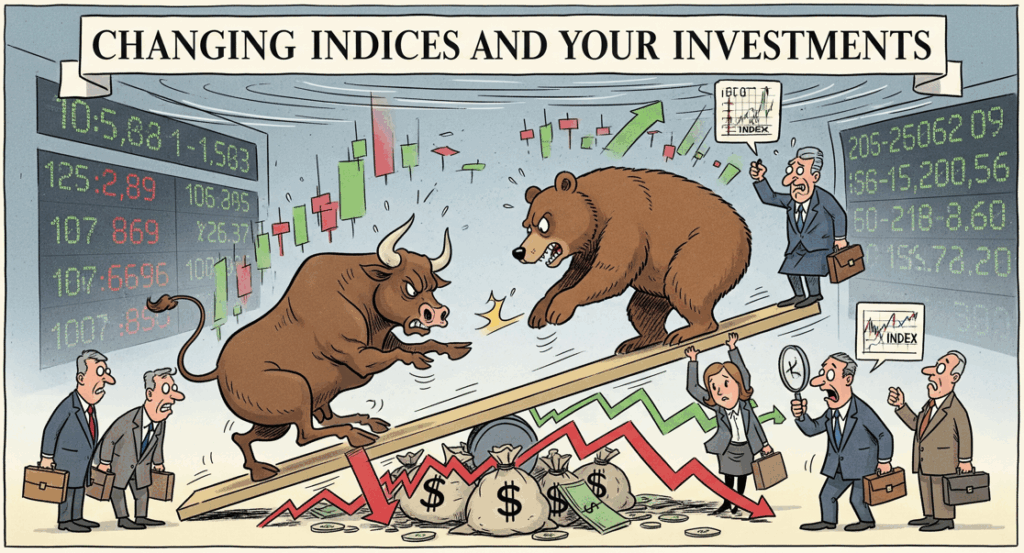The stock market is never static. What we see in the indices today will not look the same after 15 or 20 years. Many companies that were once part of the Sensex or Nifty have completely vanished or no longer hold the same relevance. This shows us that indices keep evolving with time and only a handful of companies manage to stay in them for decades.
A Look Back at the Early Sensex
When the Sensex was first created, its list of companies was very different. Stocks like Asian Cables, Balarpur Industries, Crompton Greaves, Hindustan Motors, and many others were once part of the index.

Over time, many of these names disappeared. Even giants like Satyam Computers, Reliance Power, Jet Airways, and Suzlon once held a spot in major indices but later faded away. The market keeps replacing old names with new ones, and history shows us that change is the only constant here.
IMPORTANT ANNOUNCEMENT
From 15th of Aug 2025, we have started sharing all our strategy updates, rebalances, and important announcements on our official WhatsApp Channel.
Why this change?
Because it’s simpler, faster, and right where you already are — WhatsApp makes staying updated effortless.
Stay updated with:
Strategy updates & rebalances
Exclusive announcements & offers
Important reminders – all in one place
Here’s an instruction manual if you are not aware of Whatsapp Channels
Why Companies Fall Out of Favor
The reason why companies get removed from indices is simple—markets change, industries evolve, and technology keeps moving forward. A business that dominates today might lose market share tomorrow. New players often take their place. While some companies survive outside the index, they may not perform as strongly as those that replace them. This is why betting only on current stars of the market can be risky for long-term investing.
The Index as a Momentum Strategy
An index works like a natural momentum strategy. It automatically removes weak companies and brings in stronger ones. This way, investors benefit from new leaders without having to constantly track the market themselves. For people who pick individual stocks but struggle to beat the index, it may be wise to simply invest in the index itself. It saves time, reduces risk, and still captures market growth.
Reviewing Long-Term Bets
Some investors prefer to hold a few stocks for the very long term. While this approach can work, it requires regular review. Technology changes, disruptions occur, and entire industries can lose relevance. The old model of “buy and forget” no longer works in today’s world. Instead, investors need to stay alert and update their portfolios as markets evolve.










